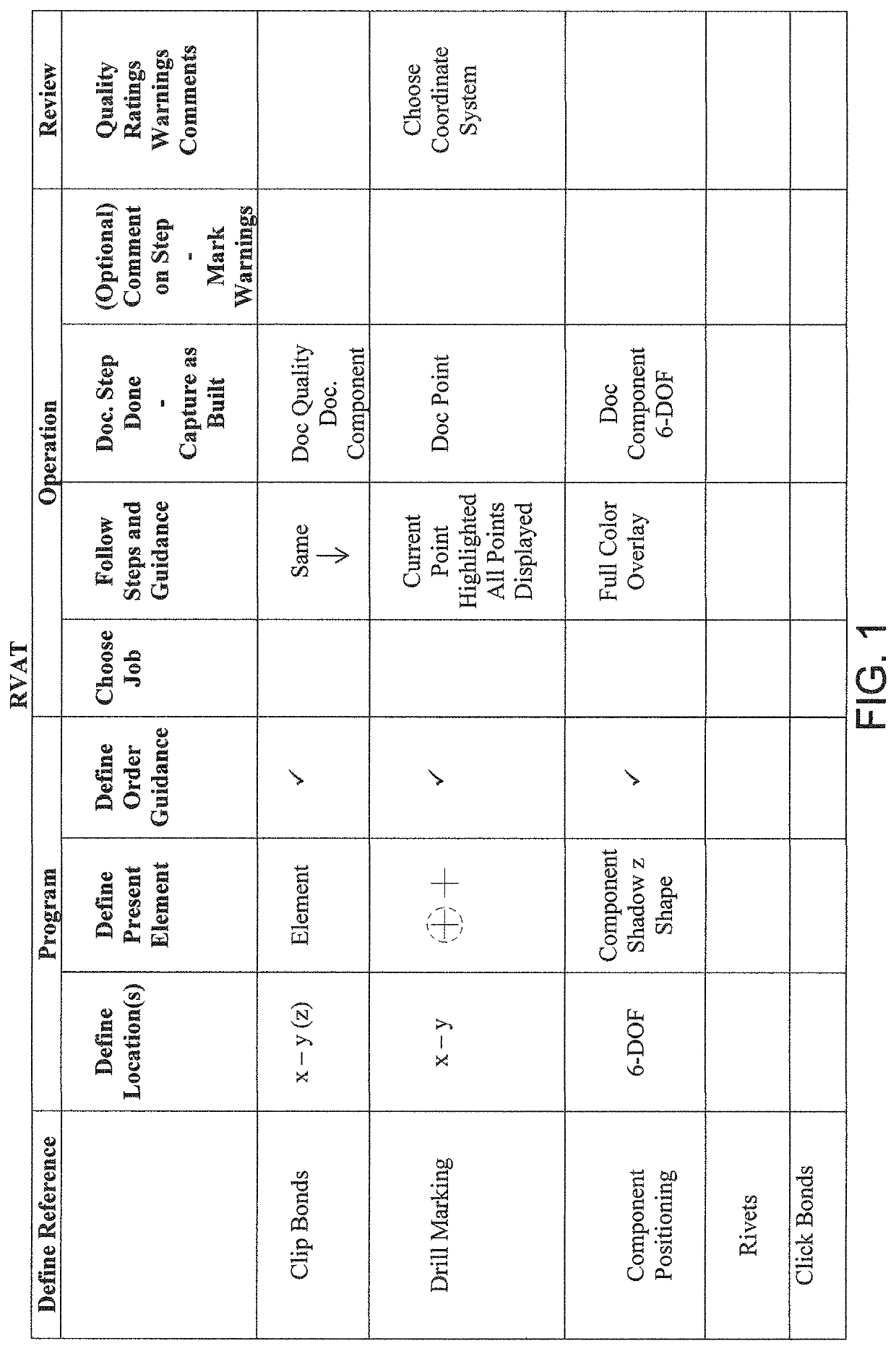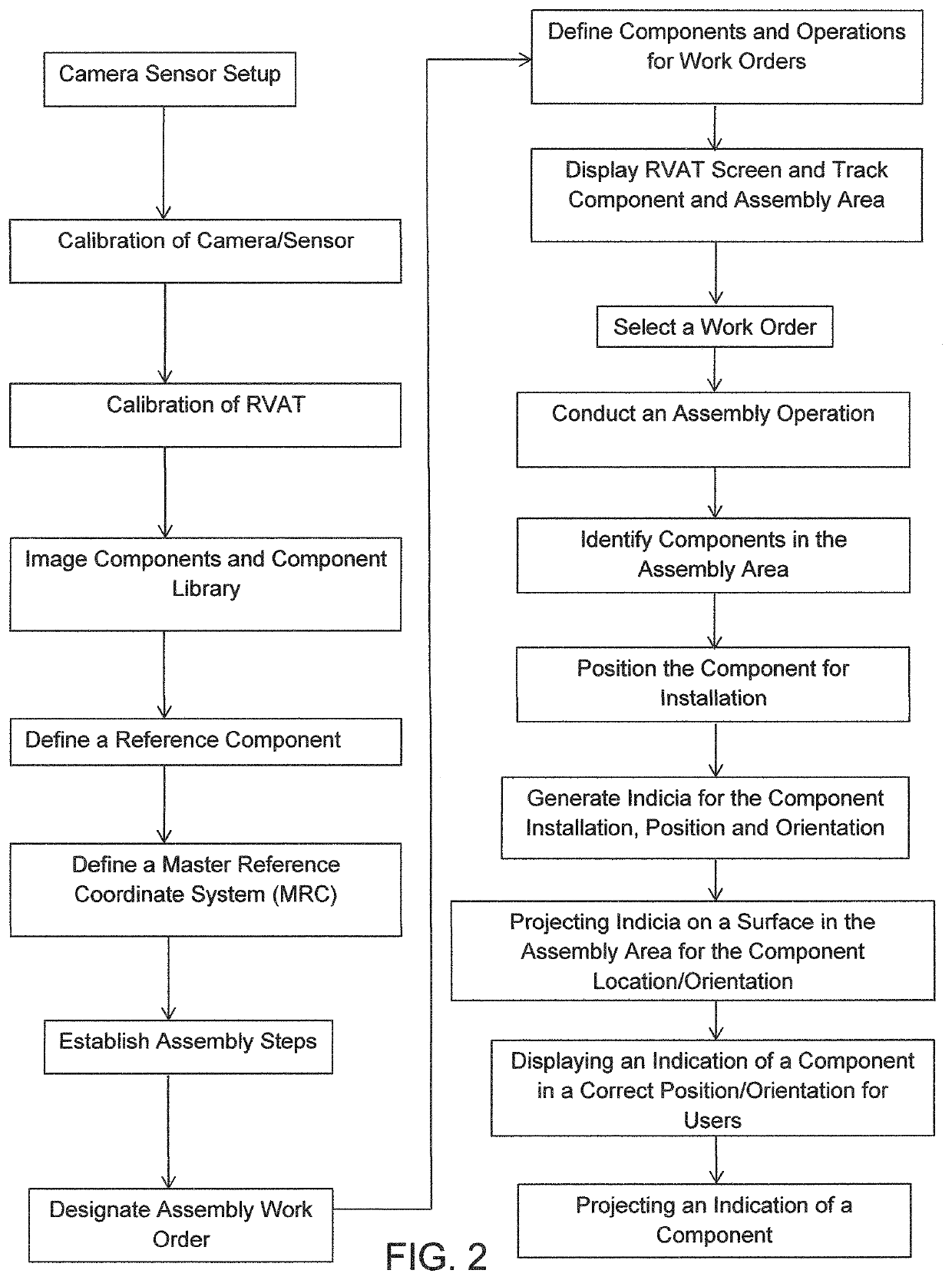Augmented reality system for component assembly and archival baseline clone
a component and augmented reality technology, applied in the field of components assemblage systems, can solve the problems of inconvenient archival and baseline cloning, so as to reduce design safety factors, reduce cost, and increase performance.
- Summary
- Abstract
- Description
- Claims
- Application Information
AI Technical Summary
Benefits of technology
Problems solved by technology
Method used
Image
Examples
example 1
[0129]A proposed example of assembly operations carried out with the system, method and devices is provided. The assembly is an aircraft constructed having a fuselage, a tail section or empennage, and wings. The fuselage is constructed to comprise the portion of the aircraft that will be occupied by the flight crew, passengers, and cargo. The wings are formed from a framework of components that may include spars, which span lengthwise of the wing and are situated crosswise of the fuselage, and ribs which connect with the spars and provide support onto which the wing covering may be installed. The ribs also may offer further stability, and in some cases these ribs are identified as compression ribs. In some types of aircraft, stringers may be employed as part of the wing assembly. Another portion of the aircraft assembly includes the power source or propulsion components, which may include a jet engine. Typically, the jet engine includes a turbine and is installed on the wings or on ...
example 2
[0139]The following example is provided to illustrate the implementation and operation of the RVAT system.
[0140]The following terminology and abbreviations are used:
[0141]FOV—Field of View is the view from one camera or the overlap between the stereo pair of cameras, also referred to as the System FOV
[0142]MV—Measurement Volume is the System FOV and the depth of measurement, typically 1×0.75×0.75, or 2m×1.5m×1.5m
[0143]Calibration—Using a certified calibration standard, typically a Calibration Cross, a stereo pair of cameras is photogrammetry calibrated to triangulate within the MV (Measurement Volume)
[0144]Reference—The Reference Component is the base structure that all measurements are made reference to, such as the lower fuselage in aircraft coordinates, so everything is accurately positioned in the aircraft coordinates.
[0145]Component—A Component is a 2D or 3D object that can be targeted, and typically a CAD model provided or ATOS Scan.
[0146]RVAT Calibration—A calibration procedu...
example 3
[0202]According to an exemplary embodiment, the RVAT system includes software that processes inputs obtained from sensors. As shown in accordance with an exemplary depiction in FIG. 9, an example of an imaging area A1 is depicted and imaging components, shown comprising two cameras 221, 222 are directed to capture the imaging area A1. A calibration plate 223 is depicted, wherein the imaging identifies the calibration details, which, for example, comprise a set of calibration indicia, depicted as circles 224a, 224b, 224c, 224d, 224e, arranged on the calibration plate 223.
[0203]A calibration step is carried out to calibrate the stereo pair of cameras 221,222. The calibration may be carried out by a user, wherein selecting the calibration tab 233 from the menu 232, and the calibration icon 235 on the display screen 234, generates and displays a calibration screen, which shows inputs from the cameras, and provides the user with the ability to make adjustments to calibrate the cameras 22...
PUM
 Login to View More
Login to View More Abstract
Description
Claims
Application Information
 Login to View More
Login to View More - R&D
- Intellectual Property
- Life Sciences
- Materials
- Tech Scout
- Unparalleled Data Quality
- Higher Quality Content
- 60% Fewer Hallucinations
Browse by: Latest US Patents, China's latest patents, Technical Efficacy Thesaurus, Application Domain, Technology Topic, Popular Technical Reports.
© 2025 PatSnap. All rights reserved.Legal|Privacy policy|Modern Slavery Act Transparency Statement|Sitemap|About US| Contact US: help@patsnap.com



